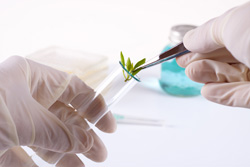How do plant cells communicate?
Cell separation is an important process that occurs throughout lifecycle of plants and involves the breakdown of the cell wall. The 'Building a regulatory network for lateral root emergence' (Emergence) project has studied the molecular mechanisms that control cell separation during the emergence of lateral roots. Lateral roots grow horizontally from the main root, helping to anchor the plant firmly in the soil. They also contribute to the take-up of water and extraction of nutrients necessary for the plants growth and development. Lateral roots originate in a small number of founder cells deep within the main roots at the edge of the vascular tissue. Vascular tissue is responsible for conducting water and nutrients through the body of the plant. Despite its importance to the root system, little was known about how lateral root emergence is regulated. Researchers from the Emergence project have identified an auxin, a substance that promotes plant growth, called LAX3. The auxin plays a key role in cell separation by regulating the genes responsible for remodelling cell walls. Project partners have attempted to identify the molecular mechanism behind this process in order to create a network model to explain LAX3 induction by auxin. The model will be tested to determine whether it can predict important new components of the lateral root emergence pathway. Work conducted by the Emergence project will help scientists to better understand how information is transmitted between plant cells, enabling them to produce improved crops.







